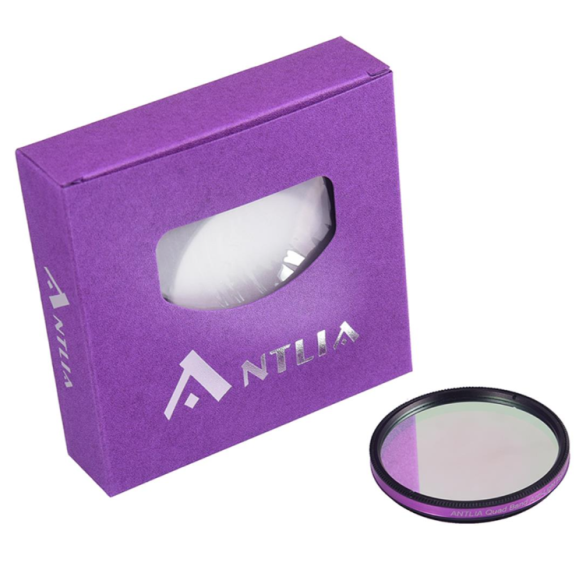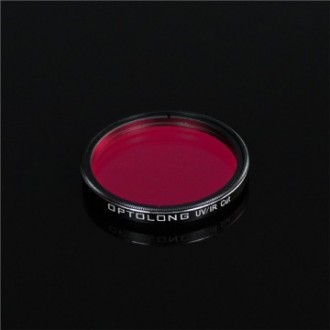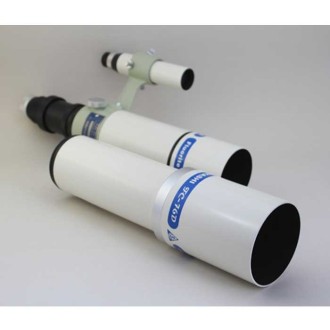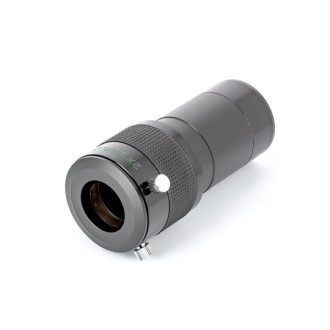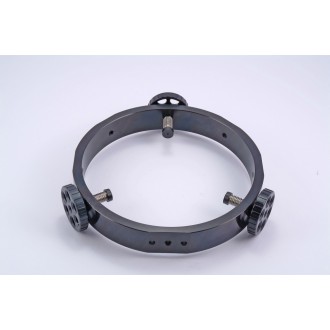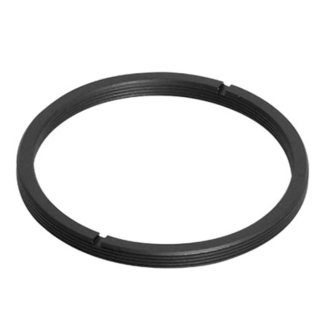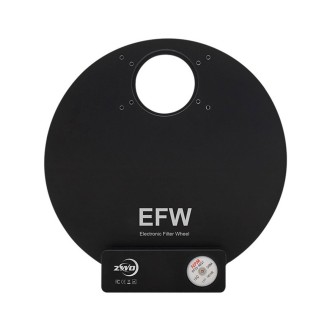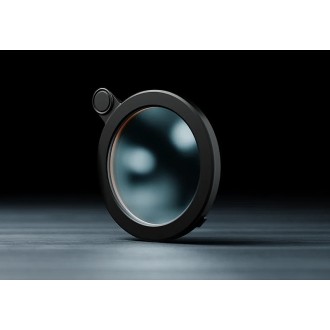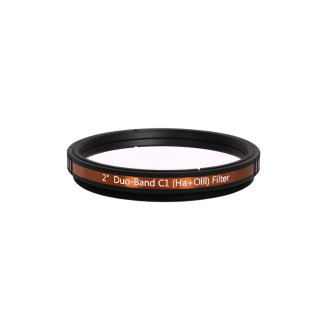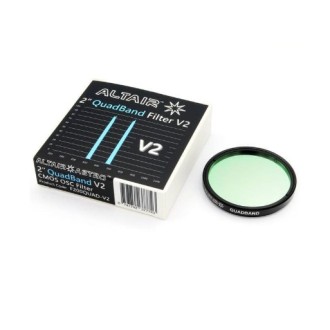Deliver it 8/15 days
| Carrier | Description | Estimated Delivery | ||
|---|---|---|---|---|
 |
Home delivery - International | Home delivery - International |
Friday, 2 May - Friday, 9 May |
|

Home delivery - International
Home delivery - International
Estimated delivery:
Friday, 2 May - Friday, 9 May
2" QUAD band filter ANTLIA
The Antlia "4 band" filter is designed to suppress a large part of the light pollution from "one-shot color" cameras (OSC), such as astronomical color cameras or digital cameras, as well as monochrome cameras. Antlia proposes to leave 4 major emission lines: H-Beta (486.1nm) / OIII (495/500nm) / H-Alpha 656.3nm and S-II (672nm) with narrow bandwidths. In addition, a zone at 400 nm (blue) ensures good color balance. A wide zone in the near infrared (NIR) from 760 to 920nm is present due to the good sensitivity of current cameras in this spectral region.
The Antlia 'Quad-Band' filter is therefore more selective than conventional RGB filters that do not cut light pollution... while being 'brighter' than interference filters such as H-Alpha, SII, OIII. It is therefore compatible with imaging galaxies and clusters (which radiate in the entire visible spectrum). Antlia estimates that 95% of objects can be imaged in skies between 1 and 8 on the Bortle scale. Another important aspect of this particular filter is the clear "cut-off" of each zone and its compatibility with instruments with ultra-short focal ratios down to f/2.
The idea is to block as much as possible the emission peaks of Mercury (Hg) and Sodium (Na) lamps, which pollute our skies.

Transmission curve of the QUAND BAND Antlia filter. The wavelength in nanometers is on the x-axis. The transmission percentage is on the ordinate. The vertical lines indicate the main emission lines of the nebulae.
Radiation from the Hbeta, OIII, H-Alpha and SII nebulae is transmitted at more than 93% and the slopes of the cut-off points are clear. Although the colorimetry of galaxies is modified (they radiate over the whole spectrum, unlike nebulae, which emit mainly in one spectral region), this type of filter is very well adapted. The same is true for globular clusters.

Applications and performance
Designed specifically for use with DSLR, CMOS and CCD color cameras and monochrome sensors. Optical Density (OD) 4 suppression at unwanted visual wavelengths increases the signal-to-noise ratio.
For imaging of nebulae, galaxies, and star clusters
Sharp cuts on extremely steep lines minimize internal reflections
Ion gun-assisted deposition coating technology on the double-sided polished substrate, making it the most consistent and accurate light suppression filter on the market
Good performance at focal ratios above F/2, with contrast increasing with focal ratio
Designed to suppress a significant proportion of artificial illumination on the Bortle scale of 1 to 8. Near IR (NIR) is blocked up to 1100 nm
Transmission index greater than 93% for H-Alpha, SII, NII, OIII lines
2" (50.8 mm) M48 threaded mount
2" QUAD band filter ANTLIA



